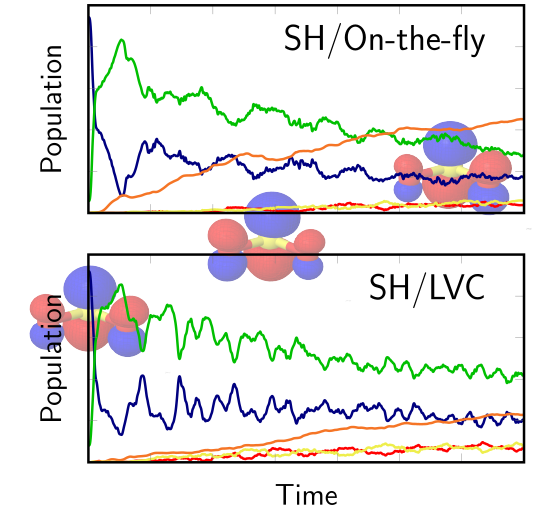A new paper co-authored by F. Plasser just appeared in PCCP: “Highly efficient surface hopping dynamics using a linear vibronic coupling model.” The paper shows that it is possible to perform photodynamics simulations of nonadiabatic processes, such as internal conversion and intersystem crossing, at virtually no cost.
The implemented approach relies on the idea of parameterising the involved potential energy surfaces using a vibronic coupling model. Vibronic coupling models have been commonly used for quantum dynamics simulations before. The novelty of the present paper is the realisation that the combination of vibronic coupling models with quasiclassical surface hopping dynamics provides a blackbox and computationally cheap method for gaining qualitative insight into time-resolved photophysical properties of molecules. The method was implemented in the SHARC molecular dynamics package.
